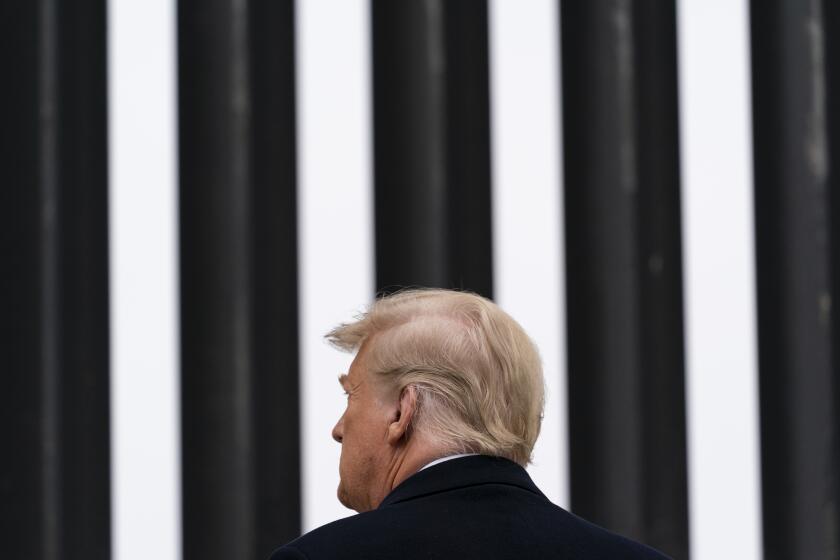U.S. nuclear industry: Not safe enough
The specter of nuclear disaster in Japan has prompted nuclear industry representatives in the United States to offer reassurances that no such thing could happen here. Our plants are better designed, they say, our system of government oversight is stricter, and a quake of that magnitude is highly unlikely.
If you believe that, I have a fail-safe blowout preventer from the Gulf of Mexico I want to sell you.
Some 25 years ago, on behalf of a group of San Luis Obispo residents called Mothers for Peace, I urged the U.S. Nuclear Regulatory Commission and then the federal courts to block the operating license for the Diablo Canyon nuclear plant. The facility, located on the Central Coast of California, sits just a couple of miles from the Hosgri earthquake fault, which is believed to be capable of generating a magnitude 7.5 temblor.
We argued that the plant should not be granted an operating license because, among other concerns, emergency plans for the facility were inadequate and failed to consider the possibility that an earthquake might trigger events leading to a release of radiation — the very circumstances that have now occurred in Japan.
The commission rejected our concerns and even prohibited its staff and the public from considering them. Their view was that the plant had been designed to withstand the “maximum credible earthquake” for the site and that therefore an earthquake couldn’t lead to a nuclear accident.
After initially granting a temporary stay of the license, the Court of Appeals for the District of Columbia Circuit, by a 5-4 vote, agreed with the commission. In a decision written by then-Judge Robert Bork (and joined by, among others, now-Supreme Court Justice Antonin Scalia and former special prosecutor Kenneth Starr), it concluded that the probability of a simultaneous earthquake and radiological accident at Diablo Canyon was “so small as to be rated zero” and, on that basis, that the commission was right to ignore it.
Judge Patricia Wald, joined by now-Justice Ruth Bader Ginsburg and others, dissented vehemently, calling the NRC’s decision “inexplicable in legal, logical or common-sense terms.” Wald excoriated the majority for “pretending that earthquakes are not material to emergency planning” for a nuclear accident at Diablo Canyon, and she concluded that if the majority was wrong, “history will allow no rehearing.”
That prediction haunts us today as we watch the nuclear crisis unfolding in Japan. If Japanese regulators had been asked a day before the quake whether the Fukushima Daiichi plant was at risk, they would certainly have answered with an emphatic “no.” Yet in the wake of the massive earthquake and resulting tsunami, three reactors have experienced partial meltdowns and a fourth, containing spent fuel rods, has lost coolant and caught fire. Hydrogen explosions have occurred at three reactors, and in at least two cases the roofs of the buildings that contain them have been destroyed. One or two of the reactors have apparently breached their primary containment, and widespread offsite contamination is feared.
Whether we are witnessing a chain of events more like the Three Mile Island accident in 1979 or the Chernobyl disaster in 1986 is not yet clear, but we ignore at our peril the serious implications of what is happening in Japan for our own nuclear plants. The crisis demands that we review and, if necessary, upgrade crucial reactor safety systems and emergency response plans — particularly for nuclear facilities located along our coasts.
The basic assumption that an earthquake can’t cause a radiological accident — an assumption relied on in licensing not just Diablo Canyon but San Onofre Nuclear Generating Station in northern San Diego County and every other U.S. reactor in a seismically active area — is simply wrong. Earthquakes are unpredictable, and geologists are consistently surprised by the discovery of unknown faults. Moreover, a quake can lead to other problems such as tsunamis, power outages and coolant system failures, which, when combined with human error, can spell disaster.
Although it is true that serious accidents at nuclear plants are few and far between, it is also true that the consequences of such accidents are potentially catastrophic. Even for strong advocates of the nuclear industry, therefore, it is foolish to ignore avoidable risks — such as locating a reactor in a seismically active region or, as in the case of Diablo Canyon, assuming that engineering can eliminate any possibility of a seismically induced accident.
Once again, the debate has begun about the role of this uniquely dangerous technology in our global fight against climate change — whether this latest failure in “fail-safe” nuclear reactor safety systems disqualifies nuclear energy from a growing role in cleaning up fossil-fuel pollution as we transition to a clean energy future, a future based on energy efficiency, renewable energy and green jobs. Neither the nuclear industry nor the commission has done enough over the years to inspire public confidence. Nuclear energy isn’t cheap or clean or accident-free, and, for the relentless claims to the contrary, the credibility of nuclear utilities and the NRC has taken a beating.
Now, as Japan struggles to contain four out-of-control reactors, all of us — whatever our views of nuclear energy — must focus not on assurances that it can’t happen here but rather on ensuring it never does.
Joel R. Reynolds is senior attorney and director of the Southern California program of the Natural Resources Defense Council.
More to Read
A cure for the common opinion
Get thought-provoking perspectives with our weekly newsletter.
You may occasionally receive promotional content from the Los Angeles Times.










